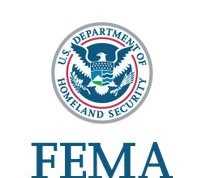THE REMAINDER OF 2022 WILL SEE ABUNDANT COMMERCIAL REAL ESTATE OPPORTUNITIES WITH SUN BELT CITIES LEADING THE WAY
2021 saw commercial real estate in the US turn a significant corner, as the country began to emerge from the pandemic, and the economy expanded at a record rate, all fueling skyrocketing demand. While retail and office space still faced some uncertainty, activity in all asset classes of real estate reached extremely positive benchmarks, with industrial and multi-family leading the way.
According to business analytics firm Trepp, total commercial and multi-family lending reached a record of $690 billion in 2021. Despite the fact that there is still some significant uncertainty in the broader market, including new Covid variants still emerging, changing monetary policy from the Fed, surging inflation, and volatility in the stock market, commercial real estate remains on track to record a banner 2022, as the industry is uniquely poised to take advantage of market conditions.
““A recovering economy and strong job market will support higher rents and occupancy. The capital sources that fueled record transaction volume in 2021 are still there and have the added incentive of seeking an inflation hedge.“,” said Joseph Rubin of accounting firm Eisneramper.
With commercial real estate clearly hitting its sweet spot, let’s take a look at some of the trends moving forward for the remainder of 2022.
The Era Of Cheap Money Is Over. But That’s Not Necessarily A Bad Thing
After 40 years of declining interest rates and ever cheaper money, the cost of borrowing is about to rise. With inflation at levels not seen in four decades, the Fed has signaled it will be turning off the spigot of easy money to reign in price rises. While higher borrowing costs would normally mean less business activity, this may actually be a good thing for commercial real estate.
According to Marsh & Partners, higher interest rates will have several benefits. Firstly any slowdown in the real estate market will be temporary because of so much pent up demand. And secondly this will help clear supply chain backlogs and thus lower the cost of construction materials. Perhaps more importantly, rising rates will help bring the real estate market to some sense of sanity, while shedding many of the inexperienced players who jumped in during the distorted era of easy money.
“You’ll finally begin to see the more efficient allocation of resources into real estate,” the report said. “Every part-time investor that has crowded the market for the last couple of years will no longer be able to compete. Rising interest rates will present a 12–18-month window of opportunity for investors to capitalize on the market dislocation.”
Multi-Family Units Will Continue To Soar
According to the Census Bureau, the median home price in November 2021 rose to an astronomical $416,900. As a result, many people have been shut out of the home buying market and have been forced to rent. Also, long time renters are upgrading from smaller units to bigger units so they can have a separate work space as the work from home trend continues. The result has led to a surge in demand in multifamily rental units. Industry experts see few downsides in this sector for the rest of 2022.
“This year, investors should watch for oversupply in the market, though it appears they can expect more of the same strong performance,” said Dan Rosenbloom Managing Director, Head of Investments at Cadre.
Industrial, Distribution and Logistics Real Estate Will Continue To Outperform
The pandemic lockdowns and the continued explosion of online shopping have led to a boom in industrial and distribution space. Over 475 million square feet of industrial space has been absorbed year-over-year, more than triple the 12-month net absorption before the pandemic.
Supply chain bottlenecks and consumer demand for faster deliveries have forced e-commerce companies to continue to expand their facilities. This will continue to be one of the strongest areas of commercial real estate for years to come.
Retail Will Definitely See A Rebound
Remember all the talk of e-commerce laying waste to traditional brick and mortar establishments like malls and main street stores? While everyone loves their online shopping, it turns out they also love to go to restaurants, to visit the salon, attend sporting events and concerts, and to actually socialize with real live people. And with pandemic restrictions falling by the wayside, there is tremendous pent up demand, offering an encouraging sign for traditional brick and mortar.
The Traditional Office Isn’t Dead. It’s Just Changing
As the hybrid work model takes hold, clearly companies will no longer be needing as much space as before the pandemic. This, however, hardly means the end of the office building.
Carson Lappetito, President of Sunwest Bank explains,“Commercial real estate, especially office space, took a hit when companies were allowing employees to work from home during the pandemic. We believe over time that will subside and most companies will have employees back in the office sooner than later.”
2022 and beyond will be a time of relearning and retooling for the office sector. Older buildings will become obsolete and will require significant capital to make them attractive.
To get people back into the office and to retain talent, companies will have to offer attractive, innovative offices with modern and safe designs. This means developers will have to adhere to strict Environmental, Social and Governance strategies(ESG.) A Cushman & Wakefield study found that sellers are achieving 25% higher prices per square foot in Class A LEED-certified office buildings and 77% higher prices in Class B LEED-certified office buildings than non-certified buildings.
The Maturing of Proptech
The Property Technology industry, or Proptech, has exploded over the last decade. According to the Center for Real Estate Technology & Innovation, over $32 billion was invested in 2021 into technology based services. These include commercial listing portals, door locking mechanisms, occupancy tracking software, smart lighting and AI that helps improve energy usage throughout buildings, and air purification systems, among others.
Sun Belt Areas Lead The Way
We’ve all heard stories in the last two years about the exodus of people from major cities like Los Angeles, New York, Chicago and San Francisco. Much of this has been overblown as many people who moved out of major metropolitan areas have now moved back. However, smaller market cities, especially in the Sun Belt, have continued to be top performers in terms of growing population, employment opportunities, cost of doing business and investor sentiment, according to Emerging Trends in Real Estate 2022. The top five cities as per the latest report are Nashville, Tennessee, Raleigh/Durham, North Carolina, Phoenix, Austin, Texas, Tampa/St. Petersburg, Florida.
“They all stand out for quality of life and they’re also tax-friendly states for businesses,” the report said. “When it comes to the importance of investor favoritism and good cities for development, it always points back to these Sun Belt markets.”
With demand high, the availability of abundant capital for investment, and an economy on the rebound, most commercial real estate sectors are set to soar to new heights in 2022. With interest rates and inflationary pressures mounting, however, investors will have to conduct due diligence, remain flexible, and choose their projects with extra care. Those that do will be rewarded accordingly.
“We foresee a record year for commercial real estate investment enabled by high levels of low-cost debt availability and new players drawn to real estate debt’s attractive risk-adjusted returns, ” noted commercial real estate services and investment firm CBRE. “Commercial real estate values will rise, particularly for sought-after industrial and multifamily assets. Investors will sharpen their focus on emerging opportunities in the office and retail sectors in search of better returns.”















